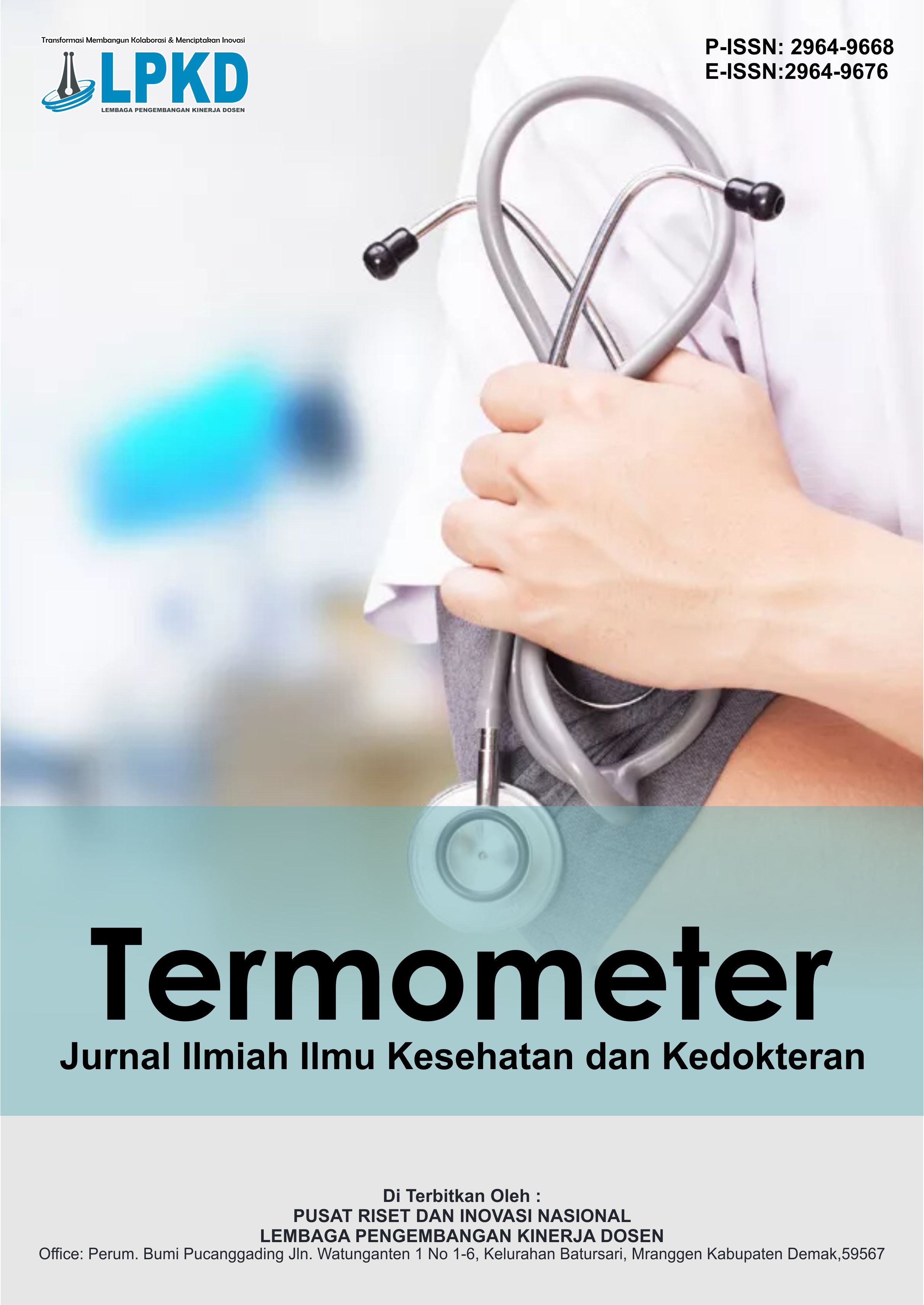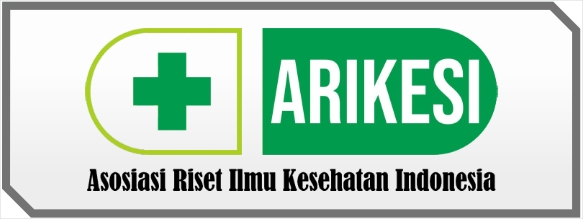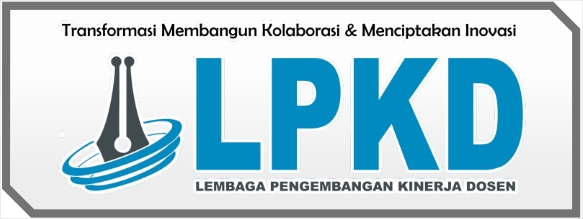Efektivitas Curcumin Dalam Mengurangi Peradangan Pada Dermatitis Atopik
DOI:
https://doi.org/10.55606/termometer.v3i2.4881Keywords:
Atopic dermatitis, Curcumin, Inflammation, NF-KB, Proinflammatory cytokines, Skin barrierAbstract
Atopic dermatitis (AD) is a chronic inflammatory skin disease characterized by pruritus, erythema, and impaired skin barrier function. Conventional treatments such as topical corticosteroids and calcineurin inhibitors effectively reduce inflammation but pose potential adverse effects that limit their long-term use. Consequently, natural-based alternatives like curcumin have gained increasing interest. Curcumin, a principal polyphenol in turmeric (Curcuma longa), is known for its anti-inflammatory, antioxidant, and immunomodulatory properties. Its mechanisms in AD involve the inhibition of the NF-κB signaling pathway, downregulation of proinflammatory cytokines (IL-4, IL-13, TNF-α), and enhancement of filaggrin and ceramide production, which are crucial for restoring skin barrier function. This study is a systematic review aimed at evaluating the efficacy of curcumin in alleviating AD-related inflammation based on recent clinical and experimental studies. The meta-analysis revealed that nano-curcumin formulations were more effective than conventional curcumin in reducing atopic skin lesions and transepidermal water loss (TEWL). Additionally, combining curcumin with emollients or essential oils exhibited synergistic effects in improving skin hydration and reducing inflammation. In conclusion, curcumin demonstrates significant potential as an adjuvant therapy for AD; however, further research is required to determine its long-term efficacy and safety profile in clinical applications.
Downloads
References
Anderson, R., & Thomas, C. (2021). Synergistic effects of curcumin and essential oils in treating atopic dermatitis. Skin Pharmacology and Physiology, 34(3), 223-239. https://doi.org/10.1159/000515602
Dattner, A. M. (2015). Botanical medicine: A European professional perspective. Dermatologic Therapy, 28(5), 330-337.
Guo, X., Li, Y., & Zhang, W. (2023). The effects of curcumin on inflammatory cytokines in atopic dermatitis: A systematic review. Journal of Dermatological Science, 110(3), 145-158. https://doi.org/10.1016/j.jdermsci.2023.04.005
Gupta, S. C., Patchva, S., & Aggarwal, B. B. (2013). Therapeutic roles of curcumin: Lessons learned from clinical trials. The AAPS Journal, 15(1), 195-218.
Hewlings, S. J., & Kalman, D. S. (2017). Curcumin: A review of its effects on human health. Foods, 6(10), 92.
Johnson, M., Singh, R., & Brown, D. (2023). Comparative effectiveness of curcumin and conventional treatments in eczema management: A systematic review. Journal of Clinical Dermatology, 40(2), 112-125. https://doi.org/10.1016/j.jclin.2023.04.002
Jones, B., & Martin, A. (2020). The role of oxidative stress in dermatitis and how curcumin can mitigate damage. Redox Biology, 38, 101758. https://doi.org/10.1016/j.redox.2020.101758
Jurenka, J. S. (2009). Anti-inflammatory properties of curcumin, a major constituent of Curcuma longa: A review of preclinical and clinical research. Alternative Medicine Review, 14(2), 141-153.
Khan, H., & Alam, M. (2023). A comprehensive review of curcumin-based nanocarriers for topical application. Advances in Drug Delivery Reviews, 194, 114478. https://doi.org/10.1016/j.addr.2023.114478
Kim, H., Lee, J., & Park, S. (2022). Curcumin as a potential therapeutic agent for atopic dermatitis: A review of preclinical and clinical studies. Journal of Dermatological Science, 105(3), 183-192. https://doi.org/10.1016/j.jdermsci.2022.07.004
Langan, S. M., Irvine, A. D., & Weidinger, S. (2021). Atopic dermatitis. The Lancet, 396(10247), 345-360.
Lee, J., & Chen, R. (2022). Enhancing curcumin bioavailability for dermatological applications: A review of recent advances. International Journal of Dermatology, 61(2), 210-225. https://doi.org/10.1111/ijd.15899
Paller, A. S., Spergel, J. M., Mina-Osorio, P., & Irvine, A. D. (2019). The atopic march and atopic multimorbidity: Many trajectories, many pathways. Journal of Allergy and Clinical Immunology, 143(1), 46-55.
Patel, D., & Mehta, R. (2022). Role of turmeric in chronic skin inflammation: A meta-analysis of clinical trials. Clinical and Experimental Dermatology, 47(6), 1123-1134. https://doi.org/10.1111/ced.15024
Rahman, N., & Gupta, R. (2022). Clinical evaluation of curcumin in managing inflammatory skin conditions: A meta-analysis. British Journal of Dermatology, 187(9), 1012-1030. https://doi.org/10.1111/bjd.21678
Singh, S., & Aggarwal, B. B. (2021). Curcumin: A natural anti-inflammatory agent with potential therapeutic effects in dermatology. Phytotherapy Research, 35(4), 1792-1810. https://doi.org/10.1002/ptr.6879
Smith, R., Patel, M., & Jones, T. (2021). Anti-inflammatory properties of curcumin in skin disorders: A meta-analysis of randomized controlled trials. Clinical and Experimental Dermatology, 46(9), 1562-1570. https://doi.org/10.1111/ced.14789
Vos, T., et al. (2020). Global burden of 369 diseases and injuries in 204 countries and territories, 1990–2019: A systematic analysis for the Global Burden of Disease Study 2019. The Lancet, 396(10258), 1204-1222.
Wang, H., Zhao, L., & Xu, P. (2020). The role of curcumin in skin barrier function improvement: Molecular insights. Experimental Dermatology, 29(8), 954-968. https://doi.org/10.1111/exd.14176
Wang, X., & Lee, Y. (2020). Modulation of NF-κB signaling by curcumin in allergic skin inflammation. International Journal of Molecular Sciences, 21(18), 6732. https://doi.org/10.3390/ijms21186732
Weidinger, S., & Novak, N. (2016). Atopic dermatitis. The Lancet, 387(10023), 1109-1122.
Yadav, M., & Kumar, S. (2023). The pharmacokinetics and bioavailability of curcumin in dermatological disorders. Journal of Pharmacological Sciences, 145(5), 789-805. https://doi.org/10.1016/j.jphs.2023.07.010
Zhang, L., Chen, Y., & Huang, X. (2019). Nano-curcumin: A novel therapeutic approach for atopic dermatitis treatment. Dermatologic Therapy, 32(4), e12987. https://doi.org/10.1111/dth.12987
Downloads
Published
How to Cite
Issue
Section
License
Copyright (c) 2025 Termometer: Jurnal Ilmiah Ilmu Kesehatan dan Kedokteran

This work is licensed under a Creative Commons Attribution-ShareAlike 4.0 International License.










